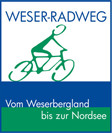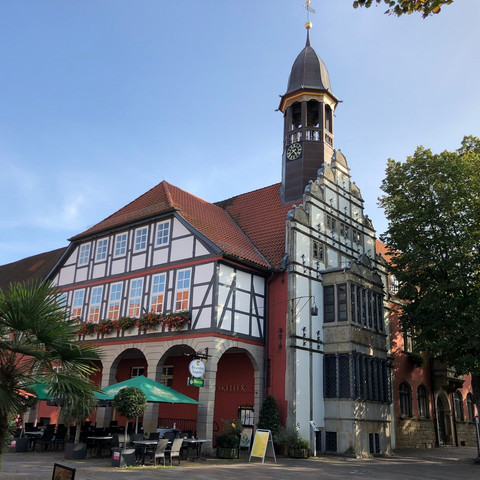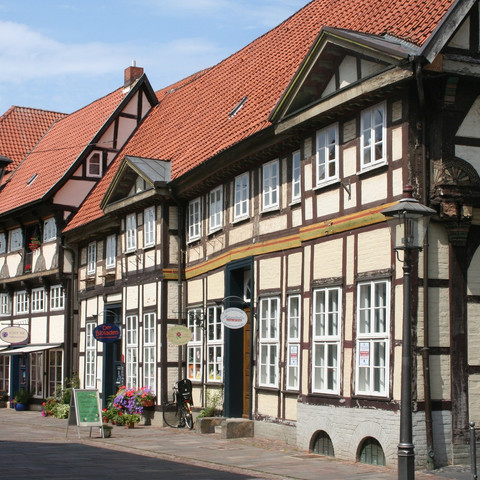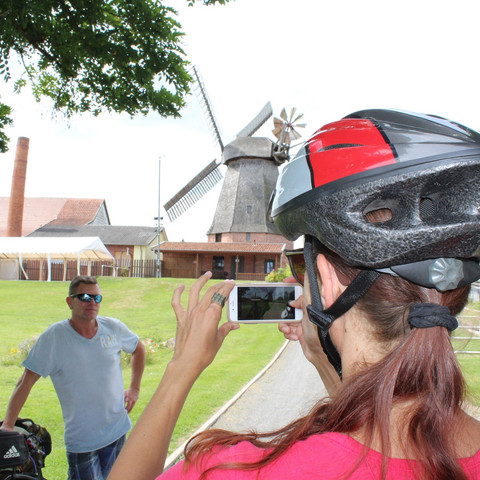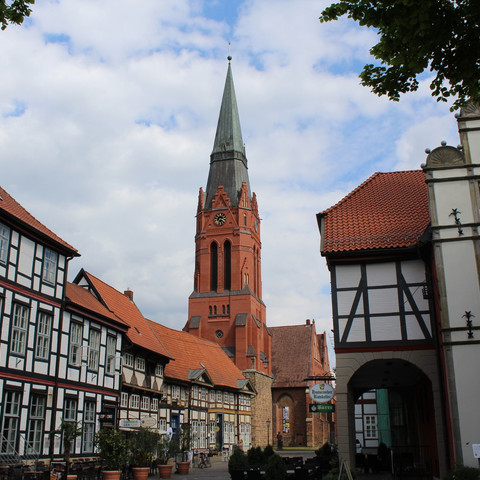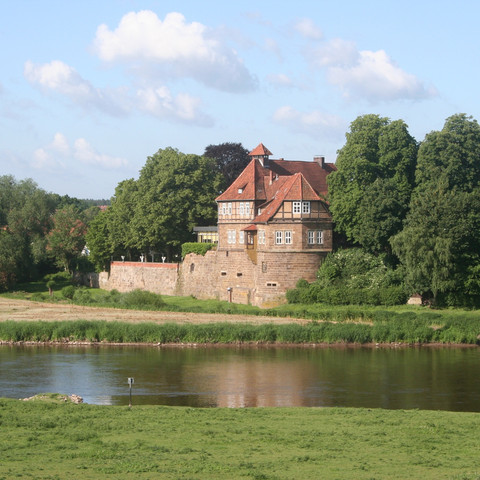North of Minden the landscape changes: the Middle Weser flows here through wide, gently rolling land. The path along the Weser leads to Petershagen – home of the white storks. On the alternative route to the right of the Weser, the path takes you via Lahde with the monastery mill, a tower windmill on an older watermill building. The town of Petershagen has 29 districts. In the center is Petershagen Castle. The former water castle, residence of the bishops of Minden, was converted into a castle in the Weser Renaissance style in the 16th century. Also worth seeing are the town church (1615-20), the old synagogue, and the old district court, built in 1913 in the Neo-Renaissance style. It is one of the best-preserved smaller Prussian district courts in Westphalia. From Petershagen, the Weser cycle path leads north to Gernheim, an industrial site from the early 19th century. The landmark is the glassworks tower from 1826, part of the Westphalian Industrial Museum Glassworks Gernheim. Those who choose the alternative route on the right Weser side from Lahde heading north should not miss the Westphalian Stork Museum in Windheim. Here you cross the Weser with the solar ferry PetraSolara (observe ferry times!). At Großenheerse the two routes reunite. From Buchholz with its old fortified church, the path leads to Schlüsselburg. The manor house of the castle (private property) was built by Ludolf von Klencke from 1581-1585 in the Weser Renaissance style. The historic barn district (17th century) on the outskirts of Schlüsselburg is an agricultural cultural asset of supraregional importance. The next town is Stolzenau, located directly on the Weser bank. On a tour, you can discover the sights: town hall, Freihof of Baron Münchhausen, fire drill area, etc. The landmark of Stolzenau is the twisted tower spire of the St. Jacobi Church. Further north, the Weser cycle path passes the site of the former Benedictine monastery Schinna (one of the oldest Protestant half-timbered churches in Germany). Before the Weser bridge in Landesbergen, you must decide: main route or alternative route – both routes have their appeal. The alternative route runs on the left Weser side through Liebenau with its beautiful town center, the St. Laurentius church, and the watermill on the Große Aue. Passing gravel lakes you reach Nienburg/Weser. The main route crosses the Weser bridge into the town center of Landesbergen with the bridal mill. Along the lock canal, it continues past the Landesbergen weir to Estorf (with a beautiful half-timbered church). In the historic barn district "Schünebusch," a cyclist's barn (group accommodation) is established. Through Leeseringen and the Nienburg meadows, the path leads directly into the center of Nienburg. From afar, the tower of St. Martin is visible. The town is also known as the asparagus town. Nienburg asparagus (end of April to 24 June) is famous far beyond the borders of Lower Saxony.

